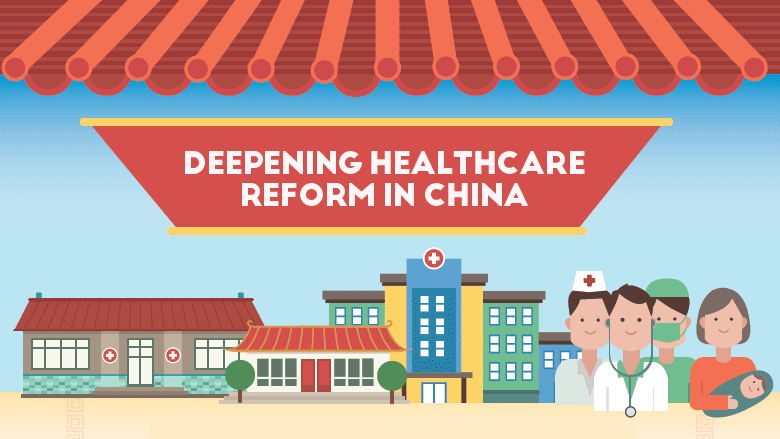Key Findings
- In the last 20 years, China has improved health delivery services and achieved noteworthy success in health outcomes.
- China has greatly reduced child and maternal mortality and rates of infectious diseases, invested in expanding health infrastructure, and ensured near-universal health insurance coverage.
- After lifting more than 600 million people out of poverty in the past three decades, China now faces slower growth, an aging population, and a surge in non-communicable diseases.
- In the past decade, healthcare costs grew at a rate of 5 to 10 percentage points higher than gross domestic product growth. At the same time, with higher economic growth and personal incomes, people are demanding more and better health care.
- Those factors have led to rising healthcare costs. Yet the slowdown in the economy will make it difficult to keep up with the current level of growth in health spending.
- Decades ago, China’s innovations in health – barefoot doctors and community health care, for example – showed the world it was possible to improve the health and greatly increase the life-expectancy for hundreds of millions of people.
- China can once again lead the way with cutting-edge primary health care by enacting reforms that put patients first and shift away from expensive hospital care.
- The World Bank’s new joint report with the Chinese government and the World Health Organization recommends the country shift away from its current hospital-centric model, which rewards volume and sales, to one focused on health outcomes that is centered on primary care and offers better value for money.
- According to the study, without reform, health spending would increase in real terms from 3.5 trillion yuan in 2014 to 15.8 trillion yuan in 2035—an average increase of 8.4 percent per year. Health spending would account for over 9 percent of GDP in 2035, up from 5.6 percent of GDP in 2014. More than 60 percent of the projected growth in health spending would come from increased inpatient services in hospitals.
- The report proposes practical, concrete steps toward a value-based integrated service model of healthcare financing and delivery.
- The study estimates it will take China about a decade to fully implement the proposed reforms and reach full scale.
- If carried out, these reforms will improve the healthcare system for all Chinese people—or one in every six people in the world.
